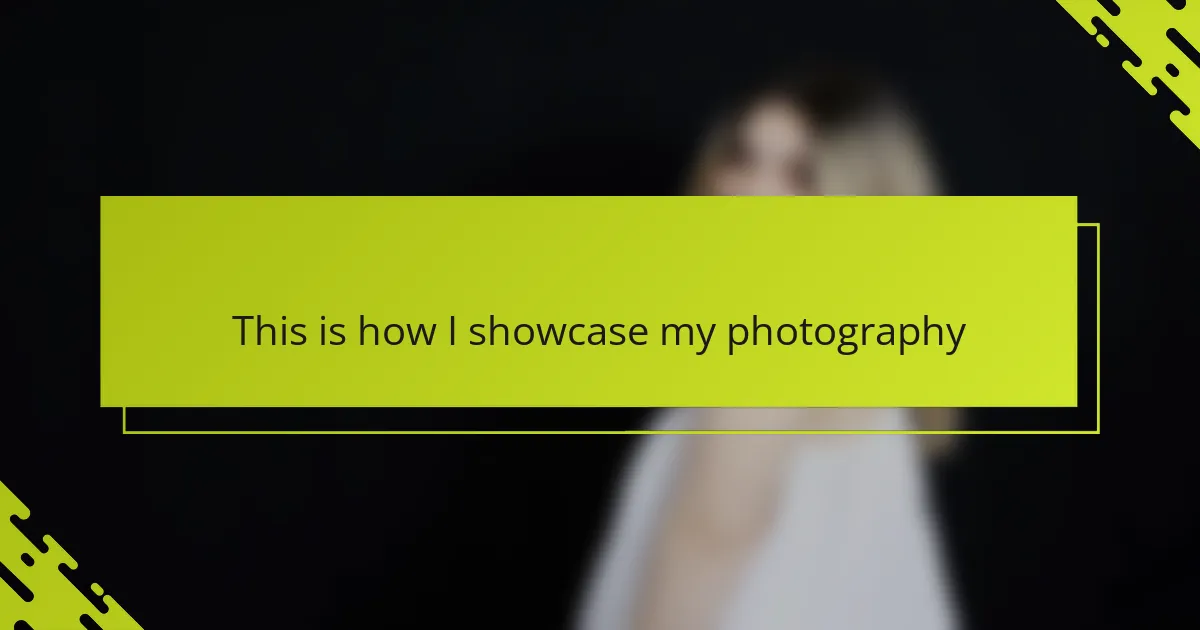Key takeaways
- Queer women culture is marked by embracing fluid identities and fostering authenticity, creating a supportive community through shared experiences.
- Key photography themes include visibility, intimacy, and transformation, highlighting the depth of emotions and connections within the community.
- Choosing the right locations enhances the storytelling aspect of photography, allowing subjects to feel safe and authentic.
- Engaging subjects through trust and open conversation transforms photos into narratives that reflect the complexity of identity.
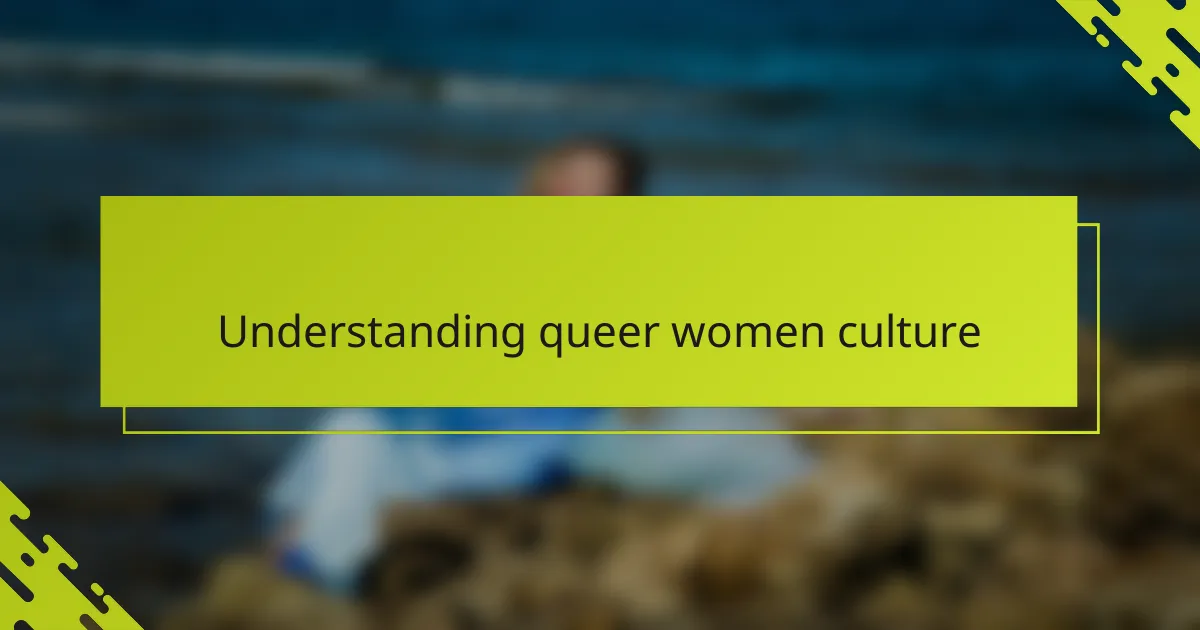
Understanding Queer Women Culture
Queer women culture is a vibrant tapestry woven from diverse identities, stories, and experiences that don’t always fit into neat boxes. I’ve found that truly understanding this culture means embracing its fluidity and the nuances that make each person’s story unique. Have you ever noticed how language evolves within communities, shaping how we relate and express ourselves?
For me, queer women culture feels like a safe space where vulnerability is strength, and authenticity is celebrated. It’s in the shared glances at community events, the art we create, and the unspoken support during difficult times. These moments? They resonate deeply and remind me why capturing them in my photography matters so much.
What strikes me most is the way queer women culture challenges mainstream narratives, pushing boundaries and redefining what it means to belong. It’s not just a subculture; it’s a living, breathing force of resilience and creativity that invites us all to question, connect, and celebrate difference.

Key Photography Themes in Queer Women Culture
One theme I keep coming back to is visibility—the raw, unfiltered moments where queer women claim space unapologetically. I remember photographing a local pride event where the smiles and gestures told stories far richer than words ever could. Isn’t it powerful how a single frame can capture both defiance and tenderness at once?
Another key theme is intimacy, but not just the romantic kind. I aim to highlight the everyday closeness between friends, lovers, chosen family. These subtle connections often go unnoticed, yet they form the emotional backbone of the community. Have you ever noticed how a quiet glance can speak volumes about trust and belonging?
Then there’s transformation—capturing both personal growth and the wider shifts within queer culture. Through changing styles, symbols, and expressions, my photos reflect resilience and evolution. It feels like each image is a small testament to the ongoing journey of identity, one that’s never fixed but always unfolding.
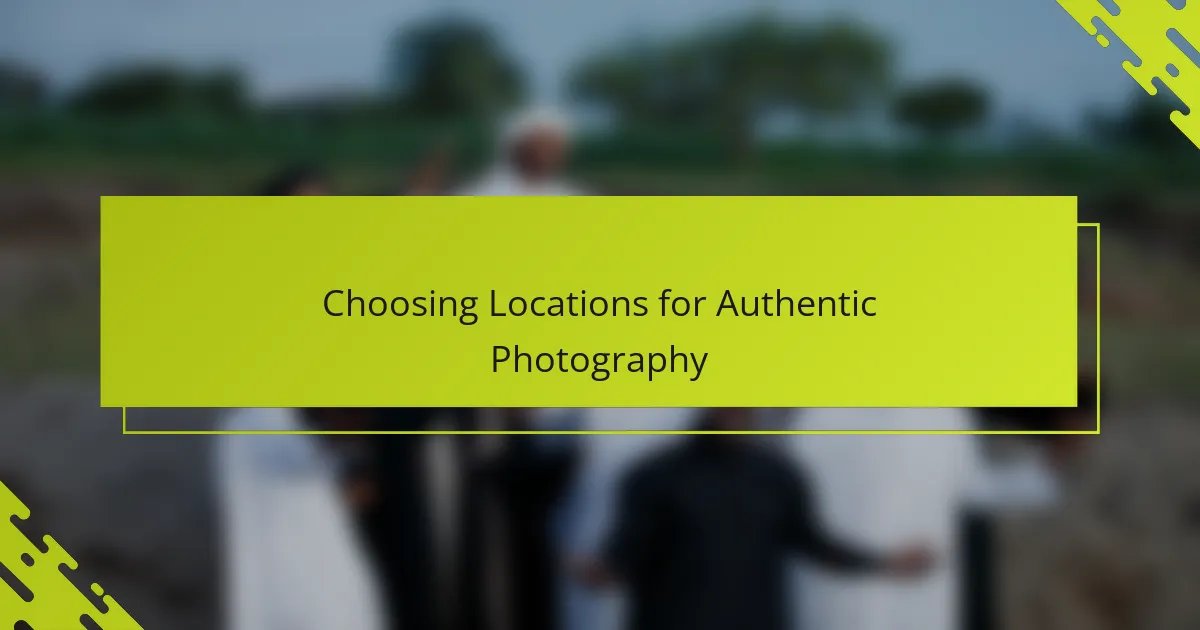
Choosing Locations for Authentic Photography
When choosing locations for authentic photography, I often look for spaces that naturally resonate with the stories I want to tell. Have you ever noticed how some places just carry a certain energy or history that amplifies the emotions in a photo? For me, those spots aren’t always the most obvious ones—they could be a quiet corner in a bustling neighborhood or a hidden mural that speaks to resilience.
I remember photographing a close-knit group of friends in a local community garden, where the sunlight filtered through leaves, and the surroundings felt like an extension of their bond. That location wasn’t just a backdrop; it was part of their story, lending warmth and depth to the moments I captured. How often do we think about how much a place shapes the feeling of an image?
Choosing a location is also about trust and comfort—queer women often bring their whole selves when they feel safe and seen. I prioritize places where people can be relaxed and authentic, whether that’s a familiar café or an outdoor space that invites openness. It’s in these environments that the real magic happens—the unguarded gestures, the spontaneous laughter—that’s where authenticity blooms.
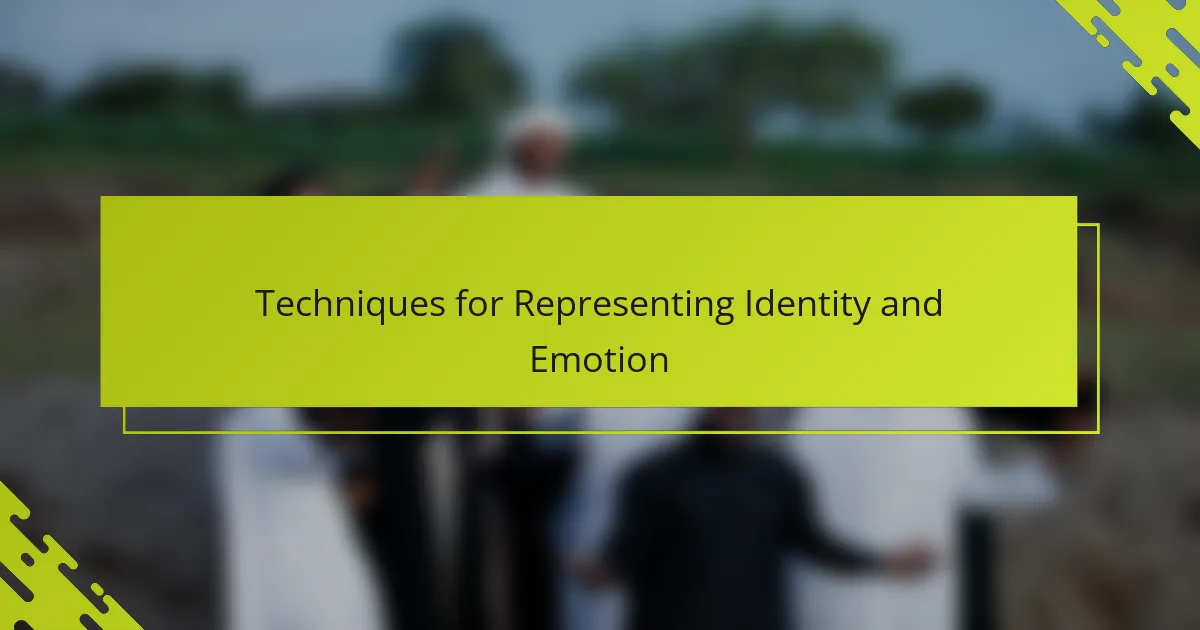
Techniques for Representing Identity and Emotion
Capturing identity and emotion in my photography often means tuning into the subtle cues that convey who someone truly is—those fleeting expressions, the way someone holds their body, or the quiet confidence in their eyes. Have you ever noticed how a slight tilt of the head or a gentle smile can reveal layers of a person’s story? For me, it’s about being present enough to catch those genuine moments before they slip away.
I’ve found that lighting plays a huge role in evoking emotion. Soft, natural light often brings out vulnerability and warmth, while shadows can hint at complexity and depth. Once, I shot a portrait during golden hour, and the way the light cradled her face made her identity feel tender and powerful at the same time—it was a small moment, but it held so much.
Another technique I lean on is creating space for openness by asking simple, open-ended questions that invite reflection or storytelling. When people feel heard and seen, their emotions surface more naturally in front of the camera. What stories might go untold if we never pause to listen? From my experience, these moments of trust transform a photo from just an image into a living, breathing narrative.
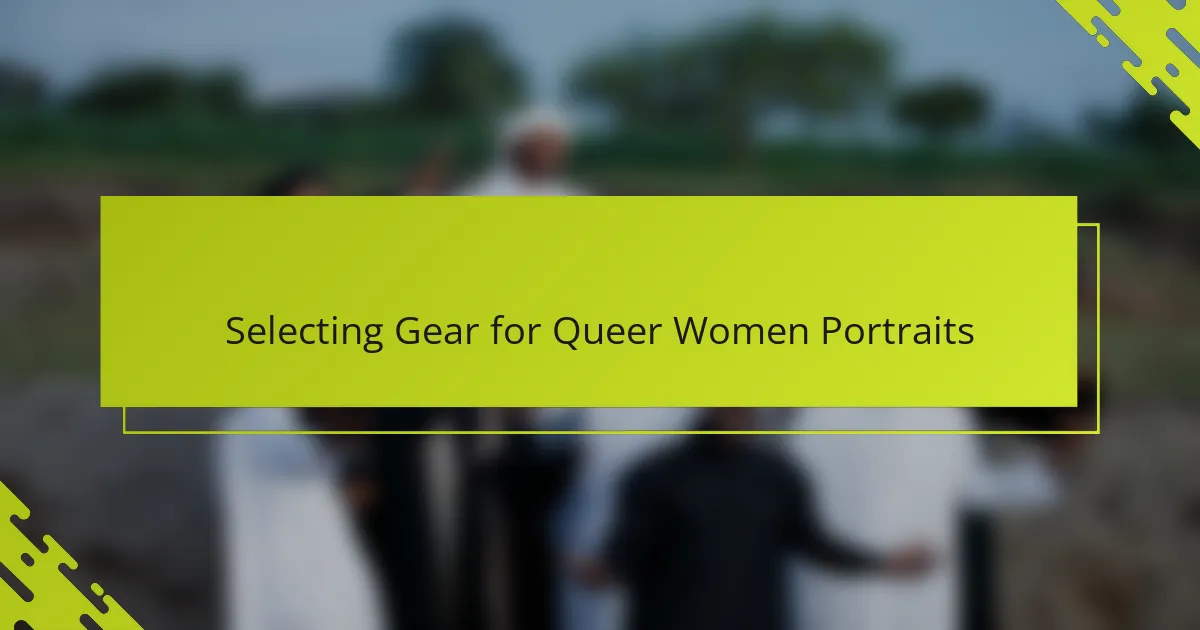
Selecting Gear for Queer Women Portraits
Selecting gear for queer women portraits is about more than just technical specs—it’s about choosing tools that help me capture authenticity and nuance. I often lean toward lenses with wide apertures; they create a beautiful, intimate focus that draws out the depth in a subject’s expression. Have you ever noticed how a softly blurred background can make a glance or gesture feel even more powerful?
When it comes to cameras, I prefer ones that feel intuitive and unobtrusive—gear that disappears into the moment rather than interrupts it. This approach makes my subjects feel more at ease, allowing their true selves to shine through. I remember one shoot where the camera’s quiet shutter helped foster a relaxed vibe, transforming nerves into genuine smiles.
Lighting equipment also matters a lot here. I rely on natural light whenever possible because it captures the warmth and vulnerability I want to highlight. But when I do use artificial light, I choose softboxes or diffusers to avoid harshness that might erase the subtle emotions on a person’s face. Does it surprise you how much gentle light can enhance a photo’s emotional resonance? To me, this kind of thoughtful gear selection is a silent partner in telling queer women’s stories.
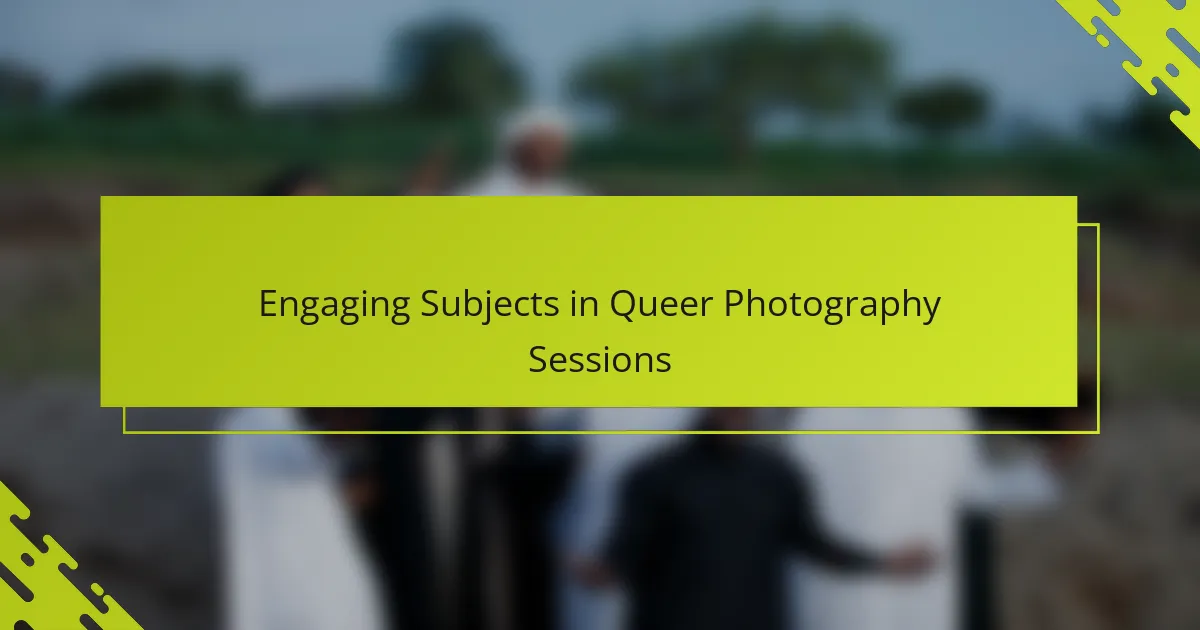
Engaging Subjects in Queer Photography Sessions
Engaging subjects in queer photography sessions is, in my experience, all about creating a space where people feel fully seen and comfortable. I often start by simply listening—asking questions not just about the shot but about their stories and feelings. Have you ever noticed how much more alive a photo feels when the subject trusts the person behind the camera? That trust changes everything.
Sometimes, the best moments come from letting the session unfold naturally rather than sticking rigidly to a plan. I remember one shoot where my subject began sharing a personal anecdote mid-session, and the vulnerability that sparked shifted the entire mood of the shoot. It’s in these unscripted moments that genuine connection shines through, capturing the complexity of identity beyond surface appearances.
Another thing I find essential is acknowledging the fluidity within queer identities during the shoot. Instead of asking people to pose in ways that might feel performative or limiting, I encourage them to express whatever feels true at that moment—whether it’s bold, soft, defiant, or tender. How often do we allow ourselves that kind of freedom in front of the camera? For me, that’s what makes queer photography sessions uniquely rewarding and deeply human.

Sharing and Promoting Queer Women Photography
Sharing and promoting queer women photography means more than just posting images online—it’s about creating spaces where these stories can breathe and resonate. I’ve found that platforms dedicated to queer voices, like specialized Instagram collectives or community zines, offer an incredible way to reach hearts and minds that truly understand the significance behind each frame. Have you ever thought about how sharing in the right context can turn a photograph into a beacon of connection?
When I promote my work, I try to engage actively with the community by participating in local exhibitions and queer art showcases. Those moments, where the photos hang among others telling parallel stories, create a sense of belonging that’s palpable and powerful. It reminds me why visibility matters—not just as proof of existence, but as celebration and affirmation of identity.
Online, I also lean into storytelling alongside my images. Captions that share thoughts, challenges, or inspirations invite people to look deeper and feel closer. Does adding context change the way you experience a photograph? From my experience, it does—it transforms viewing into conversation and viewers into allies.
